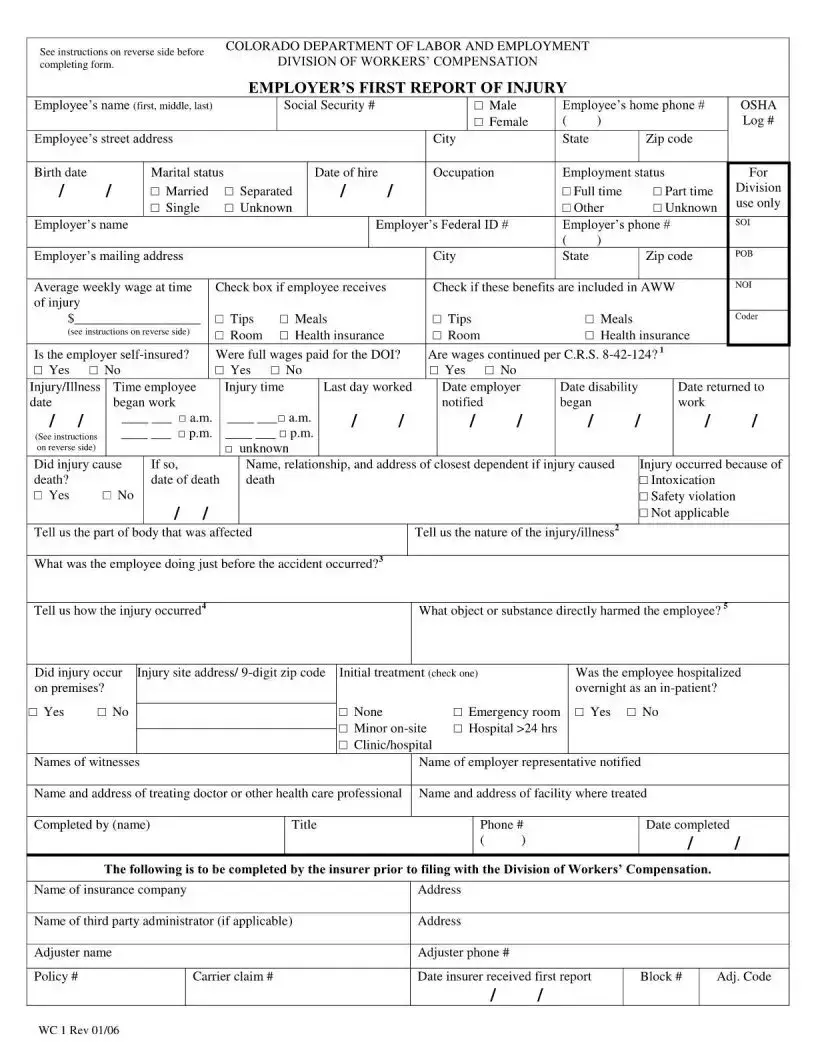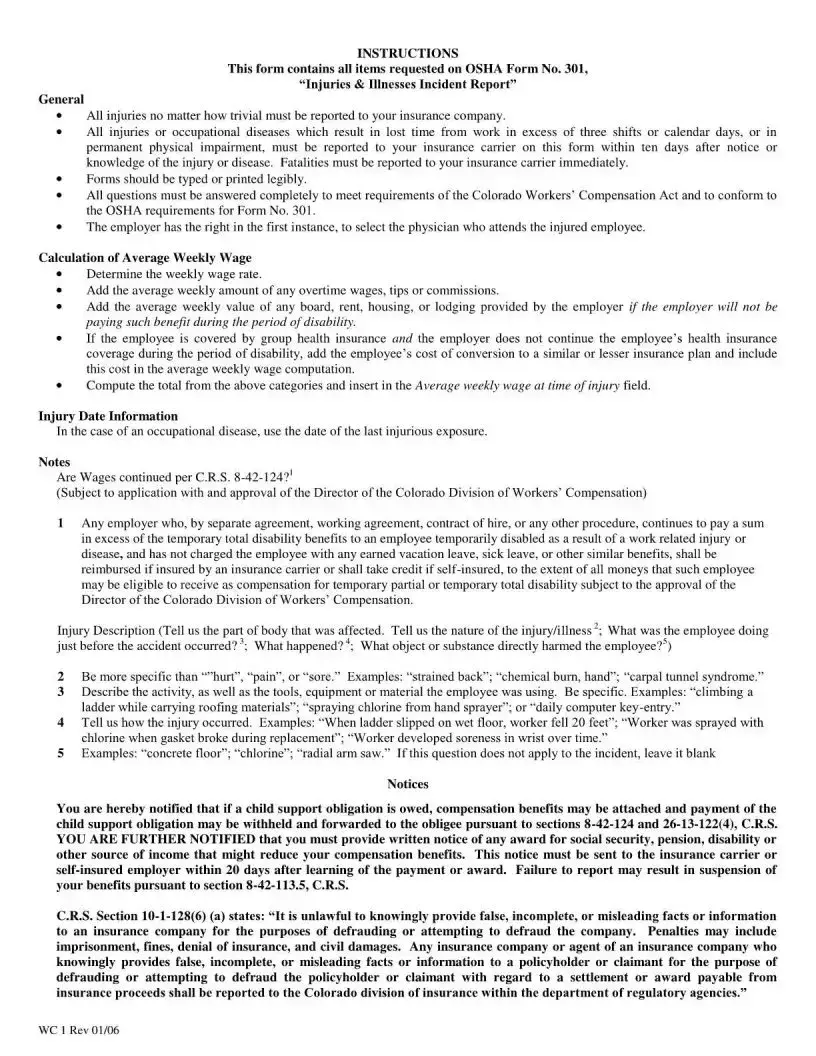What is the Colorado WC 1 form used for?
The Colorado WC 1 form, officially known as the "Workers' Compensation Claim Information" form, serves a crucial role in the workers' compensation process. It is used by employers to report injuries or illnesses that their employees suffer in the workplace. The form facilitates the initiation of the claim process by documenting the incident's details, including the nature of the injury or illness, how it occurred, and any other relevant information. This information is vital for the proper handling of the claim by the insurance company and the Colorado Department of Labor and Employment.
Who is required to fill out the Colorado WC 1 form?
It is the responsibility of the employer to complete the Colorado WC 1 form. When an employee reports an injury or illness related to their job, the employer must promptly fill out this form and submit it to their workers' compensation insurance carrier. Timely submission of the form is crucial to ensure that the employee's claim is processed efficiently and that they receive the appropriate benefits without unnecessary delays.
When should the Colorado WC 1 form be submitted?
After an employee reports a workplace injury or illness, the employer should fill out and submit the Colorado WC 1 form as soon as possible. Colorado law requires that this form be submitted to the employer's workers' compensation insurance carrier within a specific timeframe, typically within 4 business days of the report. Adhering to this deadline is important to avoid potential penalties and to ensure that the employee's claim is addressed in a timely manner.
What information is needed to complete the form?
To properly complete the Colorado WC 1 form, employers need to gather comprehensive information about the incident. This includes the employee's full name, contact information, and the date when the injury or illness occurred. Details about the incident, such as how it happened, where it took place, and the nature of the injury or illness, are also necessary. Additionally, information regarding the employee's work schedule, wages, and any witnesses to the incident should be included to support the claim.
How is the Colorado WC 1 form submitted?
The submission process for the Colorado WC 1 form can vary depending on the preferences of the workers' compensation insurance carrier. Many carriers allow for electronic submission through online portals for efficiency and convenience. Others may accept faxed or mailed forms. Employers should verify the preferred submission method with their insurance carrier to ensure compliance and expedite the claim process.
What happens after the Colorado WC 1 form is submitted?
Once the Colorado WC 1 form is submitted, the workers' compensation insurance carrier will review the claim and determine eligibility for benefits. This process includes evaluating the injury or illness's connection to the workplace and the extent of the benefits the employee is entitled to receive. The insurance carrier may request additional information from the employer or employee to make this determination. After reviewing all pertinent information, the insurance carrier will inform both the employer and employee of the claim's approval or denial and outline the next steps in the process.

